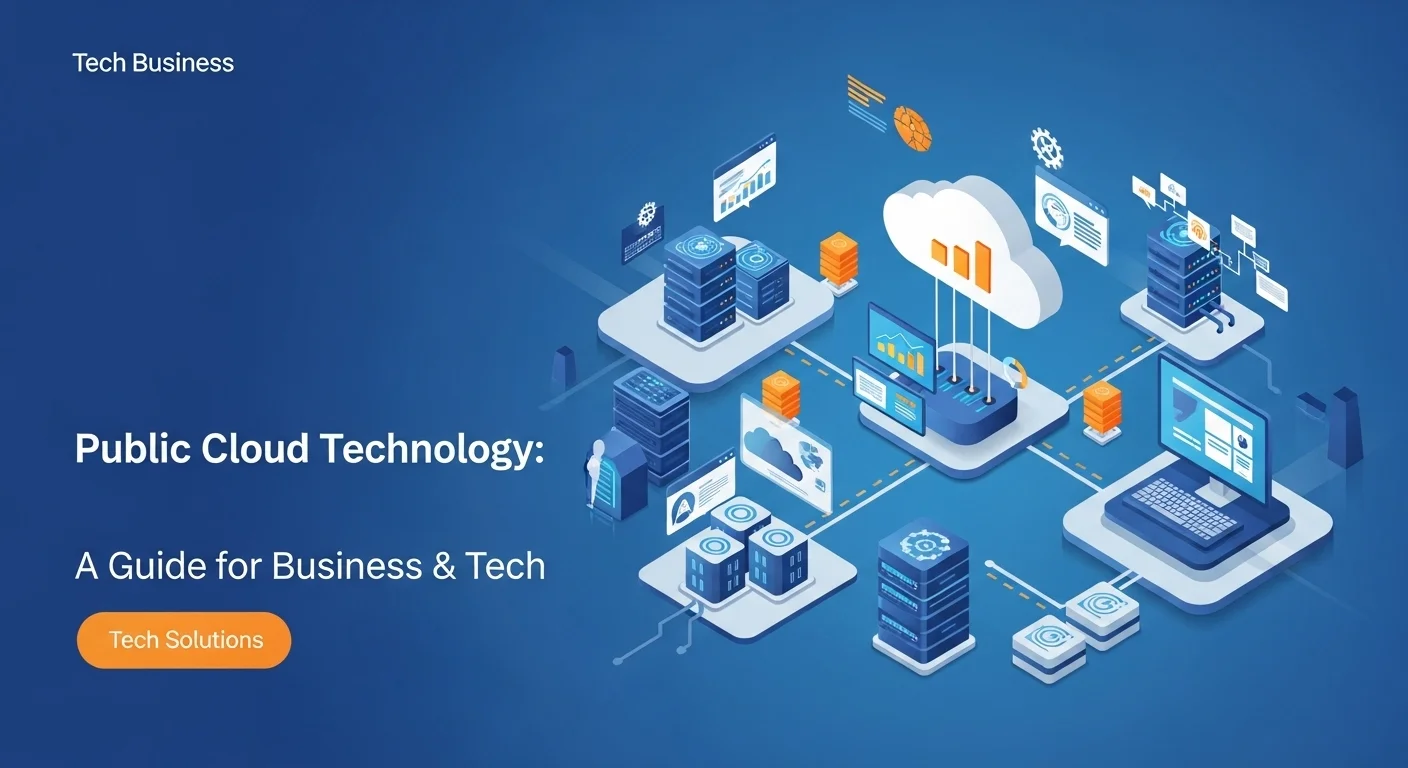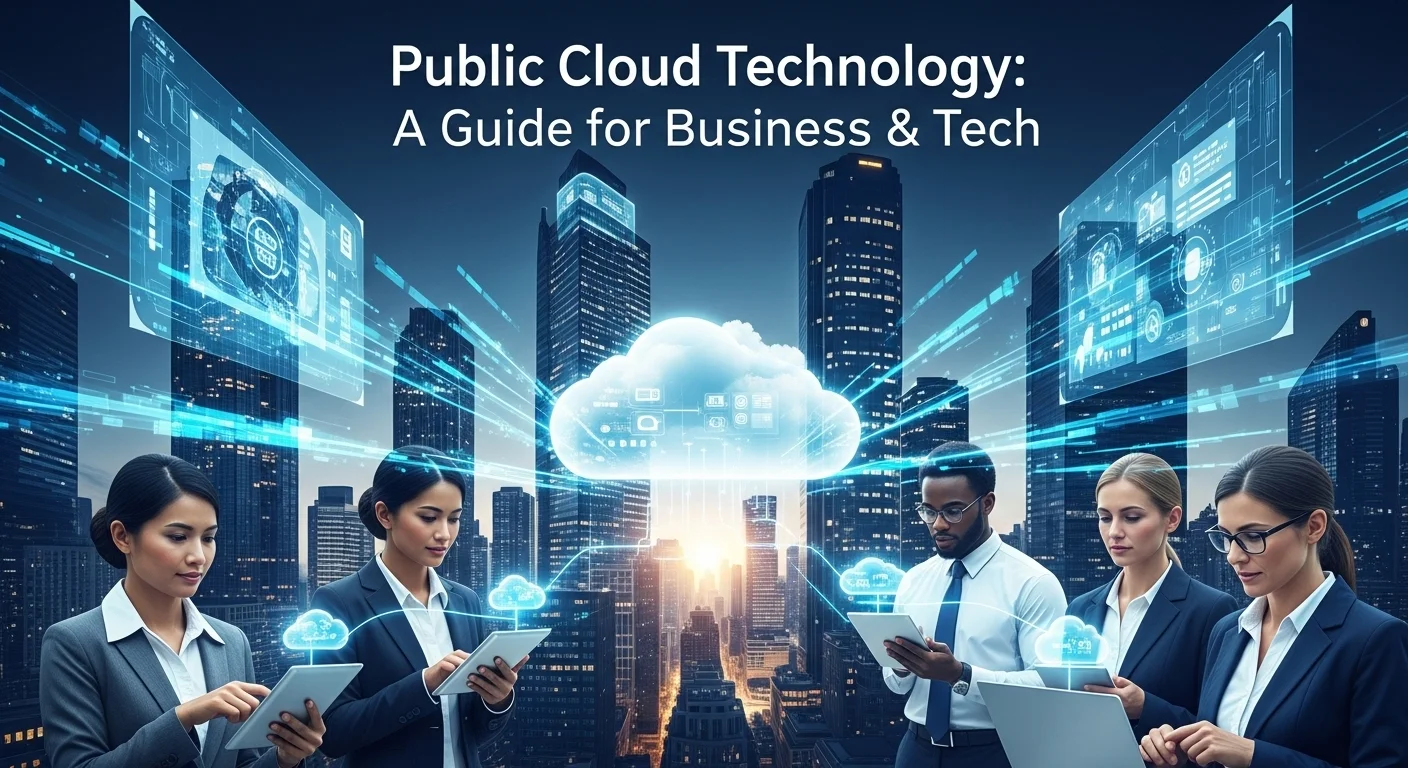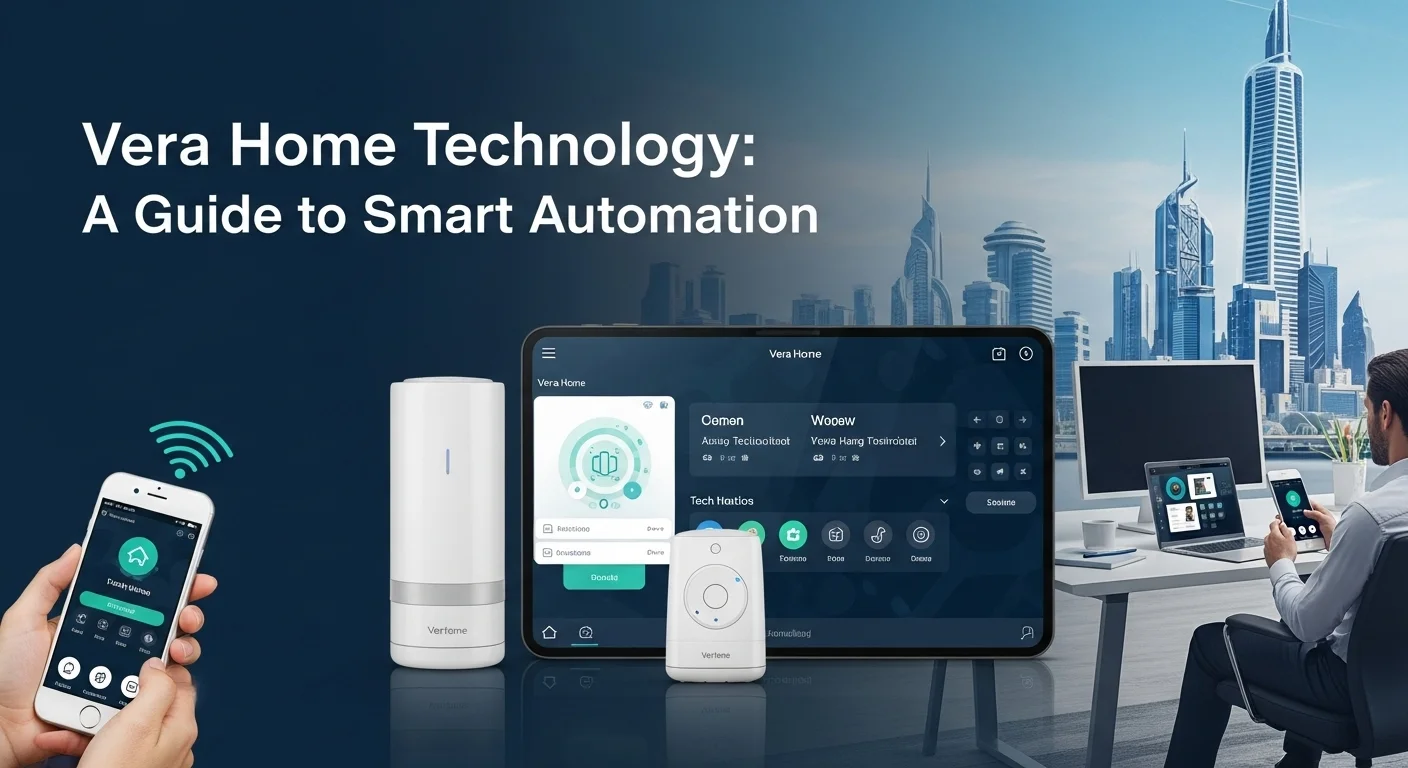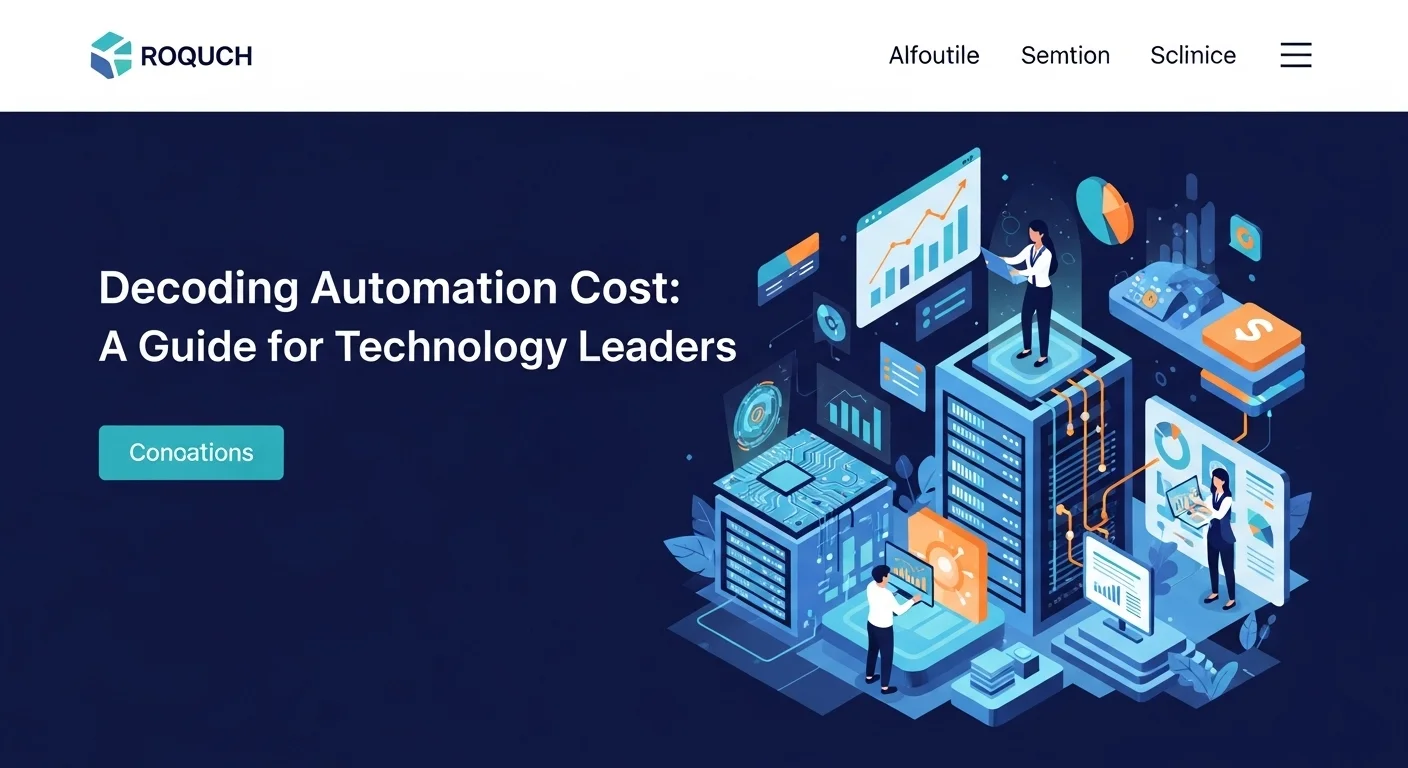Demystifying the Public Cloud: Your Guide to Smarter, Scalable Business

Executive Summary
For years, I've watched the public cloud transform from a niche tech concept into the backbone of modern business. It’s not just about storing files online; it’s about accessing enterprise-level power on a startup’s budget. This article is my personal guide to navigating this world. We'll start with the basics—what the public cloud actually is and the key services like IaaS, PaaS, and SaaS that drive it. We’ll then dive into the practical side: how to choose a provider, migrate your applications without headaches, and most importantly, how to keep your data secure. I'll also share insider tips and strategies I've learned from years in the field to help you optimize costs, boost performance, and make the cloud work for *you*. This isn't just a technical manual; it's a roadmap to leveraging the cloud for real growth and innovation.
Table of Contents
Table of Contents
- What is the Public Cloud, Really?
- The Core Service Models: IaaS, PaaS, and SaaS Explained
- The Real-World Business Benefits
- A Word on Security: The Shared Responsibility Model
- A Special Case: The Public Sector Cloud
What is the Public Cloud, Really?
I often hear the term 'cloud computing' thrown around, but let's break down what it really means for you, specifically the 'public cloud.' Think of it like your home's electricity. You don't own a power plant in your backyard; you simply tap into a massive grid managed by a utility company and pay for what you use. The public cloud is the exact same concept for computing power. A third-party provider, like Amazon, Google, or Microsoft, owns and operates colossal data centers full of servers, storage, and networking gear. They make these resources available to anyone with an internet connection. This pay-as-you-go model has completely leveled the playing field. I've seen startups go from a garage idea to a global service overnight, all because they could access the same powerful technology as Fortune 500 companies without the massive upfront cost. The public cloud isn't just a piece of tech; it's the engine driving today's digital world.
The Core Service Models: IaaS, PaaS, and SaaS Explained
To really get a handle on the cloud, you need to understand its three main 'flavors.' I see them as different levels of 'do-it-for-me' service:
- Infrastructure as a Service (IaaS): This is the most fundamental level. The provider gives you the raw building blocks—virtual servers, storage, and networks. You have maximum control and flexibility, like renting a plot of land where you can build anything you want. IaaS is perfect for companies with specific IT needs who want to manage their own infrastructure. Think Amazon EC2 or Microsoft Azure Virtual Machines.
- Platform as a Service (PaaS): This level goes a step further. The provider manages the underlying infrastructure for you, giving you a platform to build, test, and deploy your applications. It’s like renting a fully equipped workshop; you don't worry about the tools or the building, you just focus on your craft. This is a developer's dream, and great examples are Google App Engine or AWS Elastic Beanstalk.
- Software as a Service (SaaS): This is the most common model and one you probably use every day. It's a complete, ready-to-use software application delivered over the internet, usually on a subscription. Think Google Workspace, Salesforce, or Microsoft 365. You don't manage anything; you just log in and use it.
The beauty is that you can pick and choose the services that fit your exact business needs, giving you incredible control over your technology stack.
The Real-World Business Benefits
The business case for the public cloud is incredibly compelling. First and foremost is cost. I've helped countless businesses slash their IT budgets by trading the huge capital expense of buying servers for a predictable, variable operating expense. You only pay for what you use. The second huge benefit is scalability. Imagine your e-commerce site on Black Friday. With the cloud, you can automatically scale up your resources to handle the massive traffic spike and then scale back down when things quiet down. It’s elasticity on demand. Furthermore, the global footprint of these providers means you can deploy your application closer to your customers around the world with just a few clicks, reducing lag and improving their experience. It also provides a natural framework for disaster recovery, allowing you to keep your business running even if a regional outage occurs.
A Word on Security: The Shared Responsibility Model
Now, let's talk about the big one: security. Moving to the cloud doesn't mean you can forget about it. It’s what we call a 'shared responsibility model.' The cloud provider is responsible for the security *of* the cloud—securing the physical data centers, the hardware, the networking. But you, the customer, are responsible for security *in* the cloud. This means managing who has access to your data, encrypting sensitive information, and securing the applications you build. A strong security posture involves multiple layers. You need strict identity and access rules, data encryption both when it's stored and when it's moving, and constant monitoring for threats. The good news is that providers offer a huge suite of powerful security tools to help you, like AWS Shield or Microsoft Defender for Cloud. Learning to use them effectively is non-negotiable for building a safe and resilient cloud presence.
A Special Case: The Public Sector Cloud
A fascinating and growing area is how government and public institutions use the cloud. They have unique needs, including strict regulations and data sovereignty rules. In response, providers have created specialized, isolated cloud environments like AWS GovCloud and Azure Government. These are designed to handle sensitive government data and meet stringent compliance standards like FedRAMP in the US. For government agencies, this is a game-changer. It allows them to modernize ancient IT systems, deliver better services to citizens, use data to make smarter decisions, and improve their cybersecurity—all while gaining the cost and agility benefits of the cloud.

A Complete Guide to Cloud Solutions for Your Business
Getting started with the public cloud is a journey, not a flip of a switch. It requires a smart plan that blends technical know-how with business goals. In my experience, success comes from making the right choices from the very beginning. Let's walk through the practical steps to building your cloud strategy.
Choosing Your Cloud Provider: The Big Three
The first major decision is picking a provider. The market is led by three giants: Amazon Web Services (AWS), Microsoft Azure, and Google Cloud Platform (GCP). While they all offer similar core services, they each have their own personality and strengths:
- AWS: The long-time market leader, AWS has the most extensive portfolio of services and a massive, mature ecosystem. If a service exists, AWS probably has it. Their community support is second to none.
- Microsoft Azure: Azure's superpower is its integration with the Microsoft ecosystem. If your company already runs on Windows Server, Office 365, and other Microsoft products, Azure often feels like a natural extension, making hybrid cloud setups seamless.
- Google Cloud Platform (GCP): GCP shines in areas where Google itself excels: data analytics, machine learning, containerization (with Kubernetes), and high-speed networking. I often recommend it to clients whose core business revolves around data.
Your choice should come down to a careful comparison of their pricing, global reach, and, most importantly, which provider's specialized services best align with your company's future.
Navigating Your Cloud Migration
Once you've chosen a partner, it's time to move. We call this 'cloud migration,' and it's not a one-size-fits-all process. The industry often talks about the '6 R's,' but I find it's easiest to think about it in these terms:
- Rehost ('Lift and Shift'): This is the simplest path. You move your application to the cloud as-is. It's fast, but you won't get all the cloud-native benefits.
- Replatform ('Lift and Tinker'): Here, you make a few small tweaks to your application to take better advantage of the cloud, without a major rewrite.
- Refactor/Rearchitect: This is the most involved approach. You completely rebuild your application to be cloud-native. It takes the most effort, but the payoff in performance, scalability, and cost savings is huge.
The right strategy depends on the application. A critical, modern app might be worth refactoring, while an older, less important one might just be lifted-and-shifted. A good plan always starts with a thorough inventory of what you have and clear goals for what you want to achieve.
Building a Secure Fortress in the Cloud
As I mentioned, security is your job. Let’s get more specific. Building a truly secure cloud environment rests on a few key pillars. First is access control. Always follow the 'principle of least privilege'—only give users and services the absolute minimum permissions they need to do their jobs. And please, enforce multi-factor authentication (MFA) everywhere. Second, lock down your network. Use virtual private clouds (VPCs) to create isolated sandboxes for your resources and use strict firewall rules to control every connection. Third, protect your data. Encrypt everything, whether it's sitting in storage (at rest) or traveling over the internet (in transit). Services like AWS KMS or Azure Key Vault make this much easier than it sounds. Finally, you need to be constantly watching. Use tools like AWS GuardDuty or Microsoft Defender for Cloud, which use AI to spot suspicious activity in real-time. A proactive, multi-layered approach to security is the only way to stay ahead of threats.

Insider Tips and Strategies for Cloud Success
Getting the most out of the public cloud is an art. Over the years, I’ve collected a set of strategies that separate the companies that thrive in the cloud from those that just get by. Here are some of the most impactful tips I share with my clients.
Mastering Cost Optimization: Don't Let Costs Spiral
The pay-as-you-go model is fantastic, but it can be a double-edged sword if you're not careful. The key is to build a culture of financial accountability, something we call 'FinOps.' Start with visibility. Use your provider's cost management tools to see exactly where every dollar is going. Tag all your resources so you can attribute costs to specific projects or teams. Once you see it, you can optimize it. For predictable workloads, use savings plans or reserved instances to get huge discounts. For tasks that can be interrupted, use spot instances for savings up to 90%. And one of the simplest wins? Automate the shutdown of development and test environments when nobody is using them at night or on weekends. It's amazing how much you can save with just a little discipline.
Boosting Performance for a Great User Experience
A slow application is a dead application. To keep things snappy, start with the right architecture. Don't just 'lift and shift' an old app and expect it to fly. Consider if refactoring it into smaller microservices on a platform like Kubernetes would make it more efficient. Location matters, too. Placing your resources in a geographic region close to your users drastically reduces latency. I always recommend using a Content Delivery Network (CDN) like Amazon CloudFront or Google Cloud CDN. It caches your content at edge locations around the globe, making your website load incredibly fast for everyone. Finally, embrace auto-scaling. It automatically adds or removes resources based on traffic, so you can handle any surge without overpaying for idle capacity. Consistent performance monitoring will help you spot and fix bottlenecks before your users ever notice.
Embracing the Future: Automation and DevSecOps
To truly excel, you need the right tools and mindset. My biggest recommendation is to adopt 'Infrastructure as Code' (IaC). Tools like Terraform or AWS CloudFormation let you define your entire cloud setup in code. This makes everything automated, consistent, and repeatable. It’s a game-changer for speed and reliability. On the security front, shift your thinking to 'DevSecOps,' which means building security into your development process from the very beginning. Automate security scans in your code pipeline to catch vulnerabilities before they ever reach production. This proactive approach is far more effective than trying to patch holes after the fact. A proactive and automated approach to security is your best defense against a constantly evolving threat landscape.
The Final Piece: Continuous Learning and Growth
Ultimately, succeeding with the public cloud is a continuous journey. The technology evolves at a dizzying pace, so you have to foster a culture of learning. Encourage your teams to pursue certifications like the AWS Certified Solutions Architect or Azure Solutions Architect Expert. These aren't just badges; they represent a real commitment to mastering the craft. Follow industry blogs, join user groups, and never stop experimenting. The companies that win are the ones that treat the cloud not just as a data center, but as a platform for constant innovation and improvement. Your journey is just beginning.
Expert Reviews & Testimonials
Sarah Johnson, Business Owner ⭐⭐⭐
The information about the Public Cloud is solid, but as a small business owner, I was hoping for more step-by-step examples on cost savings.
Mike Chen, IT Consultant ⭐⭐⭐⭐
A really useful guide to the Public Cloud. It helped me connect the dots, though the section on migration strategies got a bit technical for me.
Emma Davis, Tech Expert ⭐⭐⭐⭐⭐
Excellent article! As a tech professional, I found this to be one of the most comprehensive yet clear explanations of the Public Cloud. It’s perfect for my specialization.



